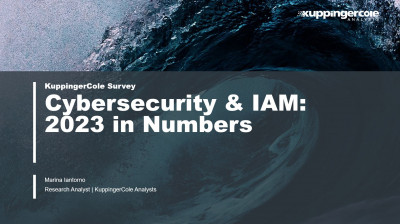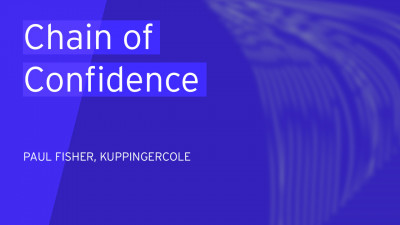1 Introduction / Executive Summary
Identity and access management (IAM) is a core component of the enterprise IT infrastructure and central to protecting digital corporate assets. By enabling enterprises to manage and govern identities and the assets they are authorized to access, IAM can ensure that the right entities—including people, applications/workloads, and devices—can access the right resources at the right time, while preventing unauthorized access, a leading cause of data breaches. To better understand the fundamental principles this report is based on, please refer to KuppingerCole’s Research Methodology.
Protecting digital assets, the systems, and applications in an IT environment of growing complexity and of a hybrid nature while facing ever-increasing attacks involve several actions organizations must take. Protecting against internal and external attackers requires a well-thought-out understanding of risks and countermeasures. Among the core elements of every infrastructure, we find IAM. IAM done right ensures that identities, their user accounts and passwords, and their access entitlements are well-managed. IAM thus reduces the attack surface by helping organizations move towards the “least privilege” principle. IAM provides the tools to automate processes around managing users and access entitlements and also for regularly reviewing these and identifying excessive entitlements.
IAM systems integrators specialize in providing identity and access management integration services to companies. Systems integrators play a key role in unifying various aspects of the IT infrastructure of an organization. Integrators provide a seamless framework for all IAM technologies to operate and fulfil organization’s demands. There are various operations that can be fulfilled by these integrators. Some of the typical functions are assessment, analysis, consultation, design, customization, implementation, and training, as well as regulatory and quality assurance, maintenance and support, scalability, and project management. Integrators assess the existing infrastructure and identify the gaps, opportunities, and requirements before organizations begin the IAM transformation journey.
Most of the integrators in the market provide a reference architecture and maturity matrix to help clients determine the required modules of IAM technology. Integrators use this information from assessment for architecture design and review the integration plan by involving key stakeholders. Various factors such as change management are also taken into consideration. Systems integrators are equipped to tackle specific requirements from customers to customize the architecture design. Customizations could be related to accommodating regulatory requirements before migration for certain applications.
The next major step is to implement the design and provide integration services to customer solutions. Systems integrators connect and deploy IAM systems across various databases, application platforms, and operating systems. Integration to third-party IT Service Management (ITSM) and Security Information and Event Management (SIEM) solutions can also be provided based on each organization’s requirements. Most of the integration projects involves a team consisting of client employees. Integrators train the client-side employees with necessary operational and maintenance knowledge. In most cases, a dedicated team of IAM professionals from integrators is involved from start to finish phase of the project. Integrators with large workforce deploy a flexible approach to completing projects. The IAM professionals are rotated based on different phases, however certain consultants and developers remain constant.
Another aspect of IAM projects is the maintenance and ongoing support. Certain integrators have a dedicated Managed Services Support team to help clients with new application onboarding, troubleshooting, and rolling out updates. Organizations are looking for system integrators that support them in scaling their operations. Integrators in the market can meet this demand by helping to design scalable solutions.
Most organizations operate in a hybrid environment with a combination of legacy systems and applications that coexist with cloud services. Enabling easy, consistent access to applications is business-critical, no matter where those applications are hosted. A unified IAM platform can make your organization’s workforce more efficient and productive, with single sign-on (SSO) and other tools that work across on-prem and multi-cloud environments. For your customers, such solutions can create frictionless, targeted experiences that lead to greater satisfaction and loyalty. Integrators can meet this requirement by providing integrations to legacy and Software-as-a-Service (SaaS) solutions.
Organizations are under intense pressure to differentiate themselves by delivering new digital initiatives and innovative services without disruption. At the same time, they must protect their legacy digital assets, systems, and data, while maintaining regulatory compliance, all in an increasingly complex IT environment amid a sophisticated threat landscape. Systems Integrators can provide advanced services around authentication for providing additional security. Most of the systems integrators in the market can provide support for all major authentication methods. Auditing and forensic capabilities are also being supported by system integrators to provide security incident analysis.
An integrated IAM platform can help organizations modernize IT and achieve their goals for workforce productivity, customer satisfaction, stronger security, greater agility, and faster innovation.
1.1 Highlights
- The market for IAM systems integrators is mature and can support a wide range of IAM technologies effectively.
- Systems integrators have robust capabilities to ensure compliance with regulatory standards.
- Systems integrators offer detailed assessment matrices to comprehend customers' needs thoroughly.
- The majority of vendors featured in this report excel in advanced services such as upgrading authentication methods to passwordless access and implementing risk-based measures, alongside aiding regulatory compliance.
- Several vendors included in this report are focused on supporting clients in USA with a few exceptions from Canadian vendors that are focused on Canada.
- Most of the vendors have achieved innovation maturity due to limitations of the requirements of the services.
- Most of the vendors have a considerable number of IAM professionals certified in major product vendors.
- Most vendors offer integration services to both legacy systems and Identity-as-a-Service (IDaaS) and SaaS solutions.
- North American IAM Systems Integrators market is made up of boutique and big firms with each having their own strengths and challenges
















































